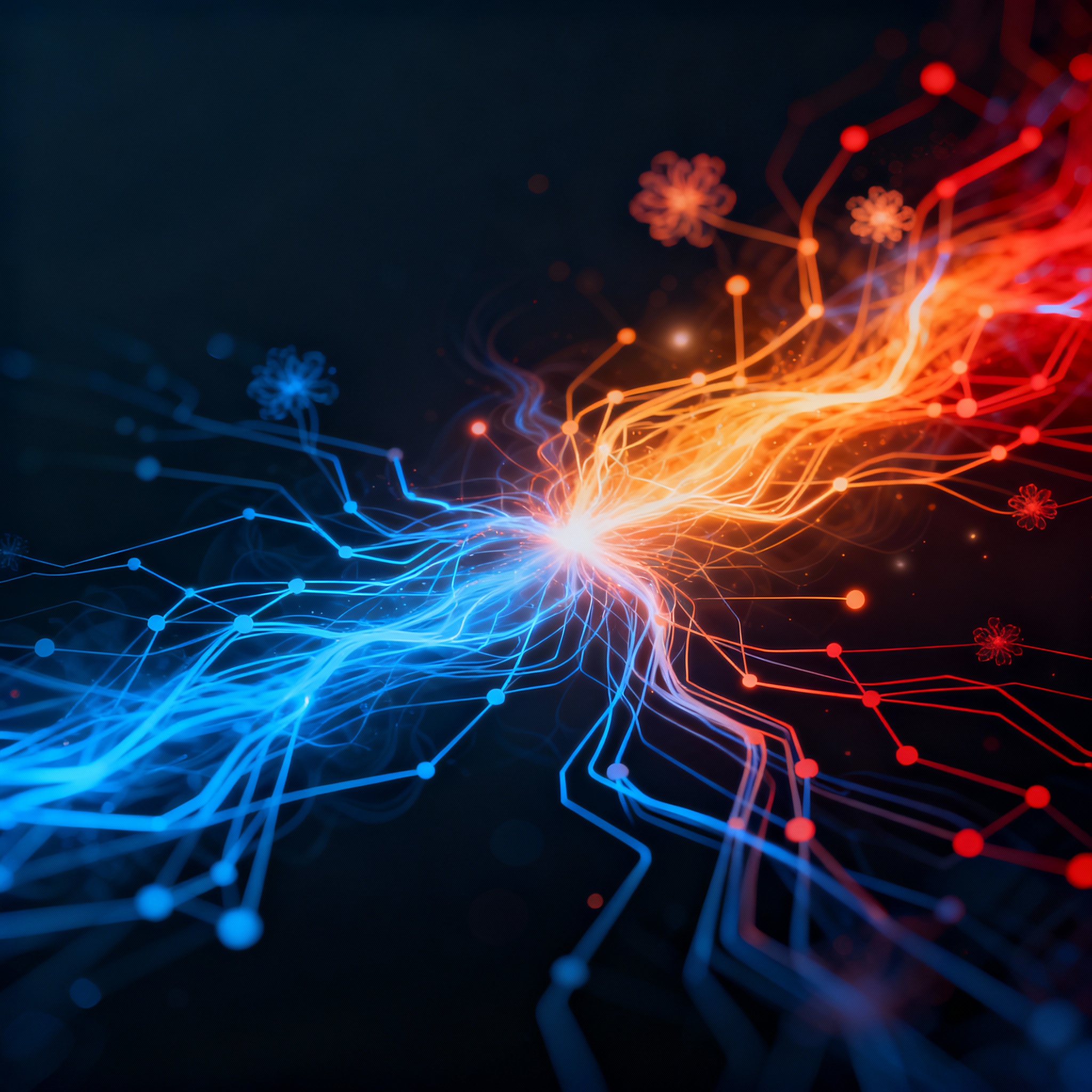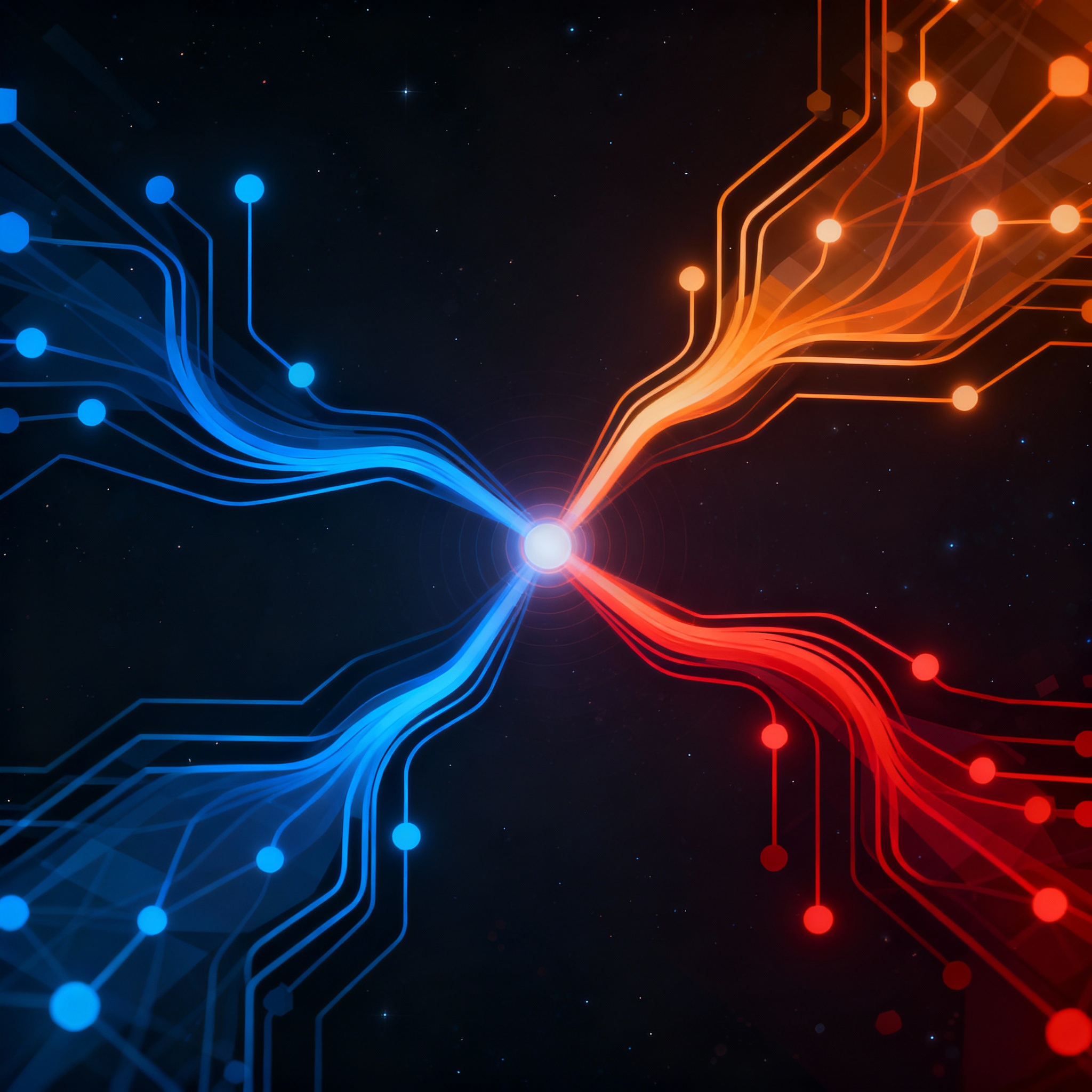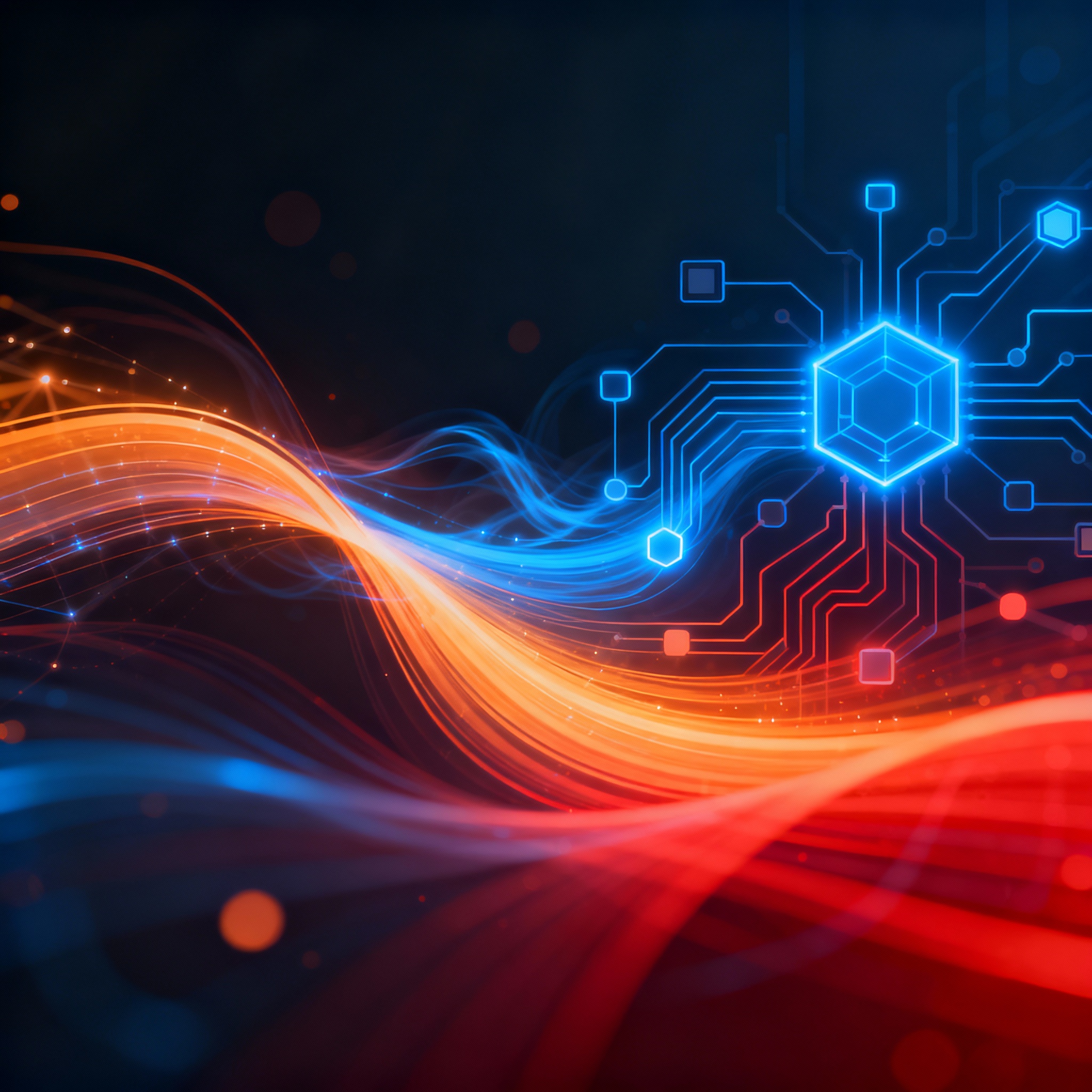
Exploring Physics Frontiers: RAG's Approach to Equation and Theory Retrieval
Exploring Physics Frontiers: RAG's Approach to Equation and Theory Retrieval
Physics is a field built on intricate equations and foundational theories that explain everything from quantum mechanics to cosmology. But sifting through vast repositories of scientific literature to find the exact equation or theoretical framework you need can feel like searching for a needle in a haystack. Enter Retrieval-Augmented Generation (RAG), a powerful AI technique that's transforming how physicists and researchers access and apply this knowledge. By integrating real-time retrieval with generative capabilities, RAG not only pulls relevant information but also contextualizes it, making it an invaluable tool for equation and theory search.
In this post, we'll explore what RAG brings to physics research, drawing on recent advancements in AI and large language models (LLMs). We'll look at practical applications, emerging benchmarks, and how tools like ChatRAG—a Next.js boilerplate for building chatbot-agent SaaS—can help you implement these systems efficiently. Whether you're a physicist, data scientist, or developer, you'll gain actionable insights into leveraging RAG for more effective scientific discovery.
Understanding RAG in the Context of Physics
At its core, RAG combines two key elements: retrieval and generation. The retrieval component searches external knowledge bases—such as databases of physics papers, textbooks, or equation repositories—to fetch relevant documents. The generation part, powered by LLMs, then synthesizes this information into coherent, useful responses. This hybrid approach addresses a common limitation of standalone LLMs: their tendency to "hallucinate" or generate inaccurate information when dealing with specialized knowledge.
In physics, where precision is paramount, RAG shines by grounding responses in verified sources. For instance, imagine querying for the Schrödinger equation in the context of quantum tunneling. A basic LLM might recall it imperfectly, but a RAG system retrieves exact formulations from trusted sources and generates an explanation tailored to your query. This isn't just theoretical; recent surveys on RAG architectures highlight how these systems enhance robustness in domain-specific tasks, including scientific reasoning.
RAG's strength lies in its ability to handle multimodal data, which is crucial for physics. Equations often come with diagrams, derivations, and contextual theories, requiring a system that can process text, images, and even code. By augmenting LLMs with retrieval, RAG ensures that searches for physics theories aren't limited to keyword matching but extend to semantic understanding.
Why Physics Equation and Theory Search Needs RAG
Traditional search methods in physics rely on databases like arXiv or PubMed, but they often fall short in providing contextual depth. Keyword searches might yield hundreds of papers, leaving researchers to manually filter for relevance. RAG changes this by dynamically retrieving and ranking information based on the query's intent.
Consider high-level physics problem-solving, such as those at Olympic levels. Benchmarks show that foundation models augmented with RAG perform significantly better in these scenarios. For example, studies benchmarking foundation models with RAG in Olympic-level physics problems demonstrate how retrieval helps models tackle complex, multi-step reasoning tasks. This is particularly useful for equation search, where retrieving not just the formula but also its derivations and applications can accelerate research.
Moreover, RAG supports collaborative approaches in physics. Large Physics Models (LPMs) are emerging as a way to integrate LLMs with domain-specific data. Research on Large Physics Models and collaborative LLMs explores how these systems can facilitate teamwork between AI and human experts, making theory retrieval more interactive. In practice, a RAG-powered chatbot could assist in real-time during lab sessions, pulling theories like general relativity to inform experimental designs.
Practical Examples of RAG in Action
Let's dive into some real-world applications. Suppose you're a student or researcher working on electromagnetism and need to find Maxwell's equations along with their theoretical underpinnings. A RAG system could retrieve key passages from historical papers and generate a step-by-step explanation, complete with vector calculus breakdowns.
One exciting development is in benchmarking multimodal physics reasoning. The PhysicsArena benchmark, which explores variable, process, and solution dimensions in physics problems, shows how RAG can handle diverse query types. For equation search, this means retrieving not only static formulas but also dynamic simulations or proofs. In a SaaS context, integrating this with ChatRAG allows developers to build chatbots that serve as virtual physics tutors, querying vast knowledge bases on the fly.
Another area is theorem proving in physics. RAG-enabled models act as "mimetic theorem provers," mimicking human-like reasoning by retrieving and applying theorems. Insights from Retrieval-Augmented Language Models as Mimetic Theorem Provers reveal how this approach improves accuracy in formal proofs, which is essential for theory search. For example, searching for string theory concepts could involve retrieving axioms and generating hypothetical scenarios, all grounded in retrieved data.
In computer science workflows that intersect with physics—think simulations or data analysis—RAG streamlines end-to-end research. Benchmarks like ResearchGPT for training LLMs in research workflows illustrate how RAG can automate literature reviews, equation verification, and theory synthesis. This is actionable for developers: using ChatRAG's boilerplate, you could prototype a SaaS app that lets users input a physics query, retrieves from sources like arXiv, and generates a customized report.
For more formal environments, frameworks like Lean4Physics for college-level physics reasoning integrate RAG with theorem provers, enabling precise equation handling in languages like Lean4. This could be applied to search for quantum field theory equations, ensuring mathematical rigor.
Implementing RAG for Physics Search: Actionable Insights
Building a RAG system for physics isn't as daunting as it sounds, especially with tools like ChatRAG. Start by selecting a knowledge base: curate a vector database of physics texts, equations, and theories using embeddings from models like those in Hugging Face.
Here's a high-level implementation steps in code-like pseudocode:
1. **Index Your Data**: Use a vector store (e.g., Pinecone) to embed physics documents.
- Embed equations as LaTeX or images for multimodal support.
2. **Retrieval Step**: On query, fetch top-k relevant chunks using cosine similarity.
- Example query: "Derive Navier-Stokes equation for fluid dynamics."
3. **Generation**: Feed retrieved context to an LLM (e.g., GPT-4) to generate response.
- Prompt: "Using the provided context, explain the theory and equation."
4. **Enhance with Agents**: In ChatRAG, add agentic flows for iterative refinement.
To make it robust, incorporate enhancements like query rewriting or hybrid search, as discussed in comprehensive surveys on RAG robustness. This ensures your system handles ambiguous queries, such as "black hole entropy theory," by retrieving from multiple sources and ranking them.
Challenges include data quality and latency. Physics data can be noisy, with outdated theories or notation inconsistencies. Mitigate this by fine-tuning your retriever on domain-specific datasets. For latency, optimize with caching—ChatRAG's Next.js setup excels here, providing fast, scalable frontends for SaaS apps.
A practical example: A university lab uses a RAG chatbot built on ChatRAG to search for plasma physics theories. Users query in natural language, and the system retrieves equations from repositories, generates explanations, and even suggests experiments. This not only saves time but fosters innovation by connecting disparate theories.
Overcoming Challenges in RAG for Physics
While RAG is promising, it's not without hurdles. One issue is the "lost in the middle" problem, where long contexts dilute key information. Solutions involve advanced chunking and reranking, as explored in various RAG studies.
Another is ensuring factual accuracy in theory retrieval. Physics evolves, so your knowledge base must be updatable. Regular ingestion pipelines can help, pulling from live sources like arXiv.
Ethically, RAG systems should cite sources transparently to avoid plagiarism in research. By design, RAG's retrieval mechanism naturally supports this, embedding links in responses.
Key Takeaways and Future Directions
RAG is poised to redefine physics equation and theory search, making complex knowledge more accessible and actionable. From benchmarking advanced models to building collaborative frameworks, the research underscores its potential to bridge AI and scientific inquiry.
Key takeaways:
- Precision and Context: RAG grounds searches in real data, reducing errors in physics applications.
- Efficiency Gains: Automate tedious literature reviews, freeing time for innovation.
- Scalability with Tools: Platforms like ChatRAG enable quick deployment of custom RAG chatbots for SaaS.
- Future Integration: Expect more multimodal and agentic RAG systems for immersive physics exploration.
As AI continues to evolve, RAG will likely become a staple in physics toolkits, empowering researchers to push boundaries further. Whether you're building the next physics AI or just curious about its applications, experimenting with RAG could unlock new insights in your work.
Ready to build your AI chatbot SaaS?
ChatRAG provides the complete Next.js boilerplate to launch your chatbot-agent business in hours, not months.
Get ChatRAGRelated Articles

Mastering Internal Knowledge: How RAG Powers Enterprise Documentation Search
In today's data-driven enterprises, sifting through vast internal documentation can be a major bottleneck. Retrieval-Augmented Generation (RAG) emerges as a game-changer, combining AI retrieval with generation to deliver accurate, relevant responses. This guide dives into implementing RAG for efficient knowledge management.

Streamlining Scholarly Scrutiny: RAG's Impact on Manuscript Review in Publishing
In the fast-paced world of academic publishing, reviewing manuscripts can be a daunting task fraught with information overload. Retrieval-Augmented Generation (RAG) emerges as a game-changer, combining AI's generative power with targeted data retrieval to enhance accuracy and efficiency. This post delves into how RAG streamlines the review process, from literature verification to constructive feedback.

Streamlining Patient Records: The Power of RAG in Modern Healthcare Management
In the fast-paced world of healthcare, managing patient records efficiently is crucial for quality care. Retrieval-Augmented Generation (RAG) combines large language models with real-time data retrieval to provide contextually accurate information. This post delves into how RAG can transform record management, backed by recent research and practical examples.